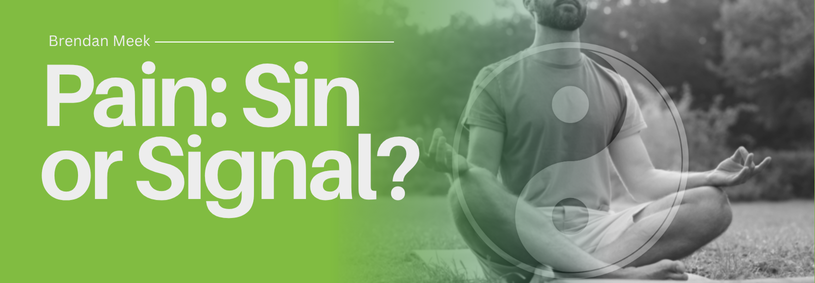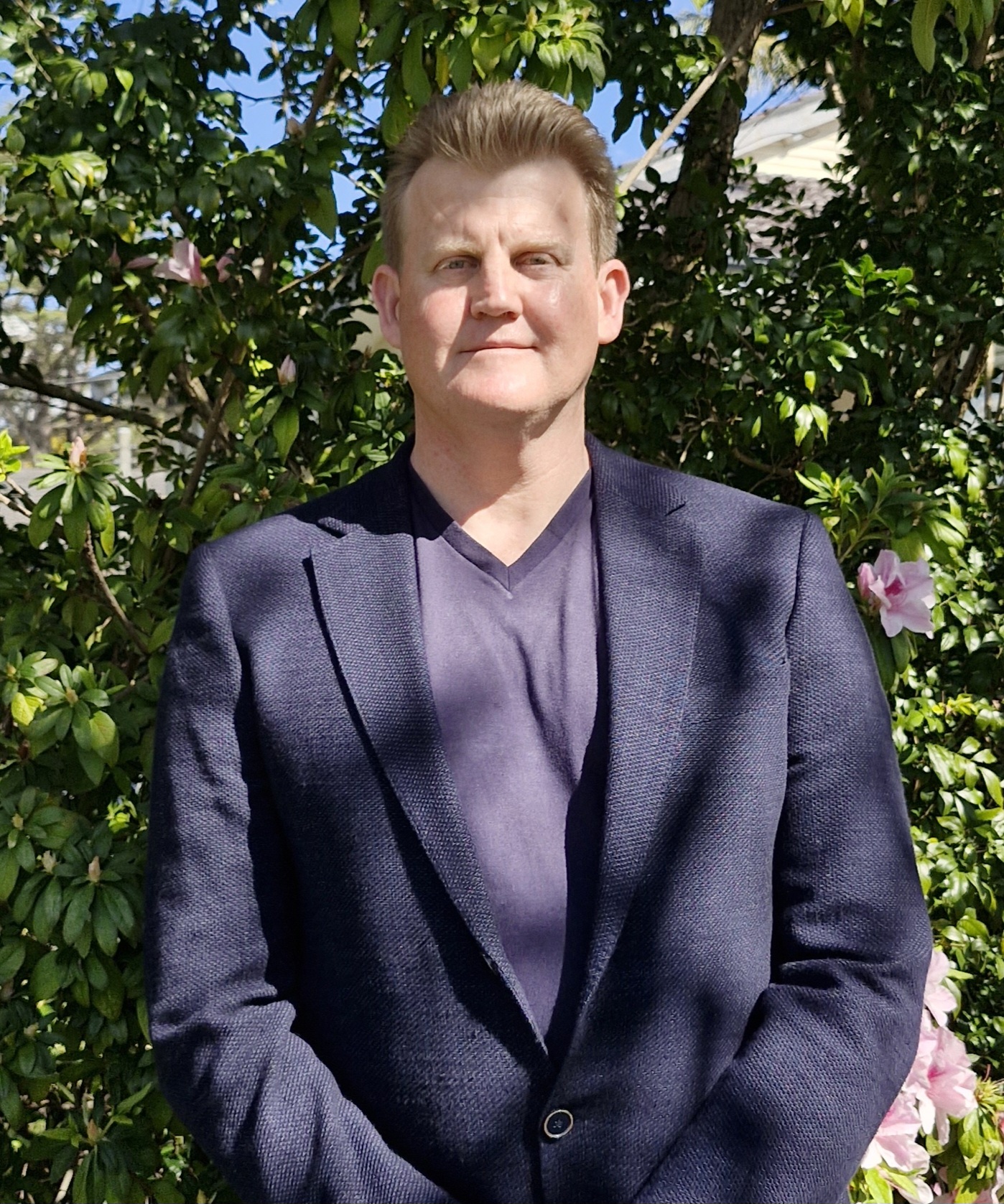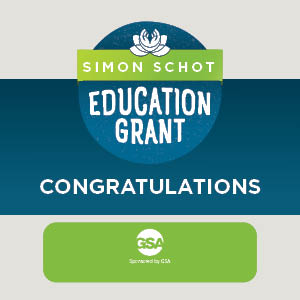Pain: Sin or Signal? Understanding and relieving pain through Chinese medicine theory and application.
- Blog
- Pain: Sin or Signal? Understanding and relieving pain through Chinese medicine theory and application.

I’m often asked in clinic or in casual conversation, ‘Hey Brendan, which herb or acupuncture point is best for pain relief?’ With an inclination towards the cryptic, I often reply, ‘All of them, or none of them.’ Panaceas, or ‘cure-alls’ are often rare and one person’s cure can be another person’s poison. It is my conviction that the power of Natural medicine lies largely in its adaptive, circumstance–based approach. As practitioners, we should strive to be like water. A fluid, responsive approach is our strength.
‘Okay Brendan, that’s great, but I’m in pain now, what can I do?’ The great sage Hippocrates gave us fantastic wisdom more than two millennia ago, ‘First Do No Harm.’ Although intended for practitioners to guide their clinical practice safely, I have found this statement just as equally fitting to patients also. In the rush to find a cure, clients may end up blindly self-prescribing and can sometimes make matters worse. Google can inform us, but it is not yet objective and sophisticated enough to provide a total assessment of a client and give correct combination of supplements, herbs, or acupuncture point treatment with the correct dosing or attention to application detail. So, what does all this mean in clinical practice? Let’s walk through an example to illustrate the point.
Client X came to see me for migraine treatment. It became known to me that the client was taking Astragalus because she had researched it was good for energy. Astragalus can alleviate fatigue; however, the herb has a tendency to lift energy up in the body towards the head and make problems in that region worse. How is Google able to perform a thorough diagnosis on the client and prescribe comprehensively, individually and safely? It doesn’t. However, not taking Astragalus greatly helped ease her migraines. A case of, ‘First Do No Harm.’
The great Chinese philosophy of ‘Wu Wei’ loosely translates to non – interference and matches well with the idea of ‘First Do No Harm.’ It means that we should not interfere with the natural processes of things. We help the body to reestablish its natural flow. By now you’re probably thinking, ‘But what about my pain, Brendan?’ Fair enough. Let’s use the previous client as an example and break it down into something actionable. If we can simplify Client X’s condition above, her pain showed two simple energetic phenomena. Energy was going up too much towards the head to create migraines. Secondly, Client X’s feet were constantly cool and became colder with migraine onset. So, in simple terms, we would need to move energy down and heat up what is cold. Now here, I should point out, we are also utilising the theory of opposites, otherwise known as Yin-Yang. Think of Yin-Yang like balancing hot and cold.
Further to the above example, let’s make it clear what Chinese medicine approach to pain relief might entail. Firstly, ‘First Do No Harm.’ Try to avoid self-prescribing, particularly herbs, which often have a much greater degree of variability regarding patient suitability than perhaps more general supplements such as B12 or Magnesium. In the case of herbs, my advice to clients is, ‘If you don’t know, don’t touch.’ Ask a professional.
Secondly, Wu Wei, or non-interference. How are you self-sabotaging your own pain relief? Start by ‘not-doing’ what is aggravating your pain. Some of these things may be less obvious. I would advise you to reestablish your own natural order. Sleep on time, eat on time, move regularly. Your body has natural rhythms that maintain health, order and flow. How are you interfering with them? Are you adequately expressing your feelings? Start moving them by listening to music or participating in creative endeavours, charity or seek further counselling.
Thirdly, Yin-Yang theory is the theory of opposites. We can use this theory as diagnosis and as treatment as follows. Empty what is full, fill what is deficient. So, if your legs feel heavy and your head feels faint, lie down and put your legs up the wall. Warm what is cold and cool what is hot. For any joint that feels cold, apply moderate heat. Use a cool compress for what is hot. For problems in the lower body, treat the top of the body. For problems in the upper body, treat the lower body. The lady with the migraines serves as an example of using the above principle by heating her feet, which, along with treatment, helped to alleviate the pain in her head.
And lastly, we should remember that in Chinese medicine, all pain is regarded as a blockage of some kind. These blockages may be caused by inflammation, which makes the blood sluggish. Avoid excess consumption of processed sugars, foods or substances that cause unwanted reactions in the digestive system. Other blockages may be caused by repressed thoughts and feelings. Others may be caused by trauma, emotional or physical. We are social beings who need connection to keep our feelings in flow. Reach out to others, socialise. Know when to seek professional help and counselling as needed.
When we can return to flow, the burden of pain diminishes – and with it, we reestablish our natural rhythm, our musical affinity with the universe: harmony.
More about the author

Brendan Meek – Authentic Acupuncture, Balmain
Brendan is a seasoned practitioner of Traditional Chinese Medicine with over 25 years of clinical experience in acupuncture, Chinese herbal medicine, massage, and acupressure. Based in Balmain, Sydney, Brendan is the founder and principal therapist at Authentic Acupuncture, a community-focused clinic known for its integrative approach to health and wellness.
Holding a Bachelor of Health Science and a deep commitment to the classical roots of Chinese medicine, Brendan blends modern diagnostics with traditional wisdom. He is also a long-standing member of the Australian Traditional Medicine Society (ATMS) and has served as an Independent Director and member of the ATMS Complaints Committee.
Brendan’s expertise spans pulse and tongue diagnosis, internal medicine, and energetic therapies, including Qi Gong and breathwork. He offers both in-clinic and online telehealth consultations, providing personalized Chinese herbal prescriptions and lifestyle guidance to clients across Australia.
With a passion for education and clinical mentorship, Brendan is dedicated to preserving and sharing the nuanced art of Chinese medicine. His clinic, Authentic Acupuncture, continues to be a trusted destination for individuals seeking natural, effective, and heart-centered care.
https://authenticacupuncture.com.au/
https://www.instagram.com/authentic_acupuncture/
(13) Brendan C. Meek | LinkedIn
Other Blog In This Category

The ATMS Research Grant allocates up to AU$20,000 to support natural medicine research that aligns the goals of the ATMS Strategic Plan.

At the ATMS AGM, the 2024 - 2025 Simon Schot Education Grants were awarded to the following ATMS member.
